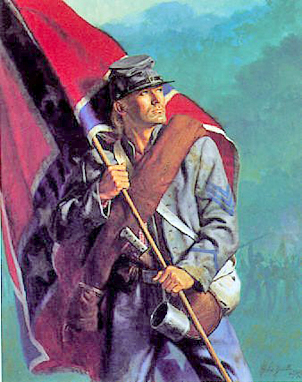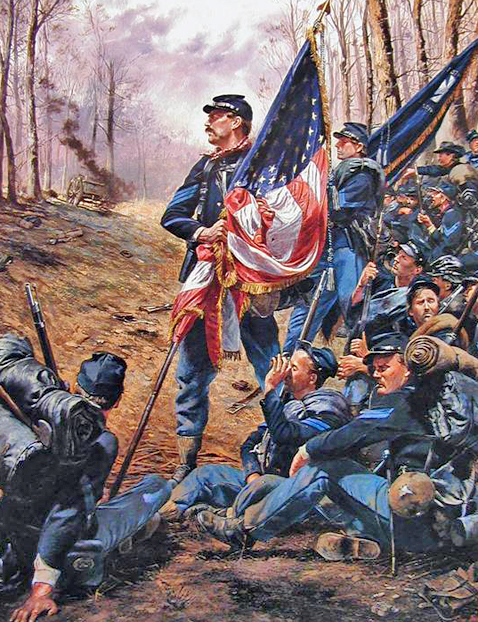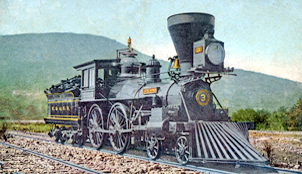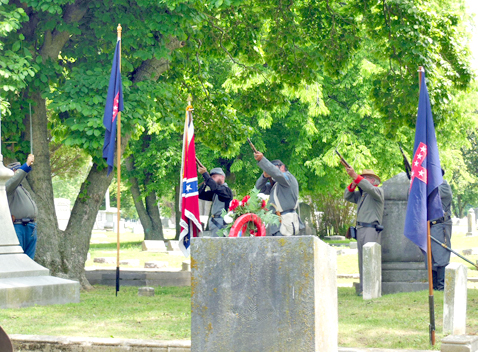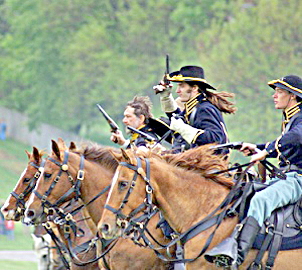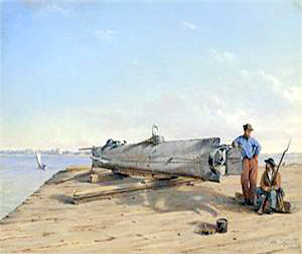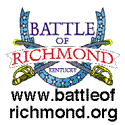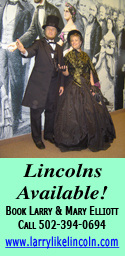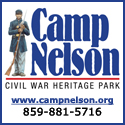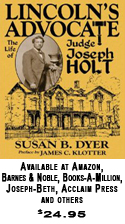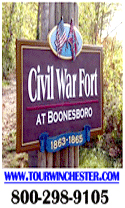|
Civil War activities key
Heritage tourism booming business
CWT, Kentucky surveys indicate
Heritage tourism is a booming business, something that holds true nationally, regionally and, specifically, in Kentucky.
A new study by the Civil War Trust (CWT) indicates that “the more there is for visitors to see and do, the longer they will stay in a historic community, increasing the economic impact of their visit.”
Read more
Another economic boost…
Hallowed Ground national parks
generate $270M per year in tourism
Thirteen national parks within “The Journey Through Hallowed Ground” national heritage area – from Gettysburg, Pa. to Monticello, Va. – generate $270 million each year in spending from tourists, according to a Michigan State University study.
Read more
Paducah memorial service made sure
colorful captain ‘won’t be forgotten’
For decades, the descendants of Capt. Richard D. Gholson tried to find where their ancestor was buried. But, without success.
It was known that Capt. Gholson had died 151 years ago while supporting the Confederate cause in Tennessee. The Western Kentucky lawyer and politician had been serving as governor of Washington Territory until the coming Civil War necessitated his return to his native Kentucky. Read more
Three Civil War specialists, writers
added to staff of Kentucky Civil War Bugle
Three outstanding re-enactors and writers about the Civil War have been added to the editorial staff of The Kentucky Civil War Bugle.
Look for articles in this and future issues from Bryan Bush, Judy Pierce and Doug Lippman who have been cited for their knowledge and expertise in the War Between the States. Read more
During the confusion of combat, flags
were important as rallying points
Why were flags so important in the Civil War?
Soldiers from both sides placed great importance on the flags of their regiments and would sacrifice their lives defending that flag so it couldn’t be captured by the enemy.
Read more
L&N became major player in Civil War
with 250 miles of track in its system
With the outbreak of the Civil War, railroads were discovered to be a key means of transportation for men and materiel.
And, in Kentucky, which was a neutral state, rail transportation possibilities attracted the attention of both the Union and the Confederacy. Both sides could profit from transportation within the Commonwealth, a major link between north and south.
Read more
Relic hunter unites Civil War ring
with soldier’s Pennsylvania relatives
After some 200 miles and nearly 150 years, a Civil War soldier’s ring finally has made the long journey home.
In early April, relic hunter John Blue reunited the artifact he discovered in Fredericksburg, Va., in 2005 with distant cousins of the ring’s owner in Reading, Pa. Read more
Dr. Mary Edwards Walker: she was
Civil War’s woman who wore pants
By Dr. Judy C. Pierce
Bugle Staff Writer
The people laughed and snickered at the strange looking woman walking down the street wearing pants. One onlooker remarked, “Outrageous!” Another person said, “Scandalous! You need to be put in jail.”
“What is that fancy medal she is wearing on her coat?” one man asked.
Little did these people know that this strange person was Dr. Mary Edwards Walker, the only woman veteran of the Civil War who earned the Congressional Medal of Honor. Read more
Thanks to Louisville editor, Sue Munday
became feared named among guerillas
By BRYAN BUSH
Bugle Staff Writer
George Prentice, editor of The Louisville Daily Journal, is most often credited with the “invention” of Sue Munday.
Munday actually was Jerome Marcellus Clarke, former scout and artillerist for Confederate Gen. John Hunt Morgan, who joined a guerilla band after Morgan’s death in 1864. Read more
|
|
|
Why travel, sweat, freeze to re-enact?
It could be about honoring, educating
By DOUG LIPPMAN
Bugle Staff Writer
Few hobbies are as controversial as re-enacting. Yet, for the spectators, nothing is much more entertaining than a well-choreographed replay of history. Read more
Kentucky soldier’s Civil War painting
can be purchased for mere $500,000
Sometimes, you just don’t know the value of what you have.
Leo Oaks of Grants Pass, Ore., discovered that recently when an oil painting turned up from the clean out of an old shed.
The Civil War book collector thought something looked familiar about the oil-on-canvas painting and bought it for $25. Later, when he removed the backing from the artwork, he discovered what was written on its back – “Camp of the 3rd Kent.,nr. Corinth, Miss. May 11th 1862. Painted by C.W. Chapman Co. D.” Read more
Kentucky’s Civil War leaders...
At Perryville, Jackson was in wrong place
at wrong time as Maney’s men charged
Union Brig. Gen. James S. Jackson was in the wrong place at the wrong time.
Confederate Gen. George Maney’s brigade drew heavy fire at the Battle of Perryville and retreated straight into Jackson’s 10th Ohio Division, leveling their own heavy fire.
“Well, I’ll be damned if this is not getting rather particular,” Jackson commented, just as he was struck in the chest by a Confederate minie ball that killed him. Read more
Researchers say full moon partly to blame
for shooting, death of Stonewall Jackson
Gen. Thomas J. (Stonewall) Jackson’s own men inadvertently shot him in the spring of 1863 during the evening following the Battle of Chancellorsville, Va.
And that, say two researchers, was thanks to a full moon.
Following their study, Texas State University astronomer Don Olson and researcher Laurie E. Jasinski blame the moon for Jackson’s death. They say that when the men of the 18th North Carolina Infantry Regiment fired upon Jackson, the whitish lunar light likely obscured the target. Read more
Some say million plus. . .
Totals vary, but, certainly, more horses
killed than soldiers during Civil War
Shoot away from your horse’s head.
That was a basic where Civil War mounted troops were concerned. But, despite personal caution and the value of their mounts, thousands of horses were lost during the North-South conflict. Estimates of horses killed during the Civil War vary, but the total was astounding. Some putting the figure at more than a million – more than the estimated 620,000 to 750,000 soldiers who died.
Read more
Entries for 2013 Civil War Photo Contest
will be accepted by CWT through Aug. 16
The Civil War Trust, History and the Center for Civil War Photography (CCWP) are calling for submissions to the 2013 Civil War Photo Contest, a national competition promoting appreciation of America’s Civil War heritage and the preservation of the country’s hallowed ground.
Read more
Arlington House, home Lee loved,
now renovated, reopened to public
Arlington House, the Robert E. Lee Memorial formerly named the Custis-Lee Mansion, is a Greek revival style structure located in Arlington, Va.
Once the home of Confederate Gen. Robert E. Lee, it overlooks the Potomac River and the National Mall in Washington, D.C. During the Civil War, the grounds of the mansion were selected as the site of Arlington National Cemetery, in part to ensure that Lee would never again be able to return to his home.
However, the United States has since designated the mansion as a National Memorial to Lee, a mark of widespread respect for him in both the North and South. Read more
News in brief...
At battle site…
Marker recognizes Kirkland home used
as hospital during Battle of Perryville
A home used as a hospital during the Battle of Perryville has been noted with a historical marker dedicated April 27.
The Kirkland Home was deserted when Charles King Kirkland and Caroline Purdom Kirkland fled with their three young children to escape the Oct. 8, 1862 battle. The Kentucky Historical Society stated that the Kirklands returned a few days later to find much of their property destroyed. Read more
|
|
|




